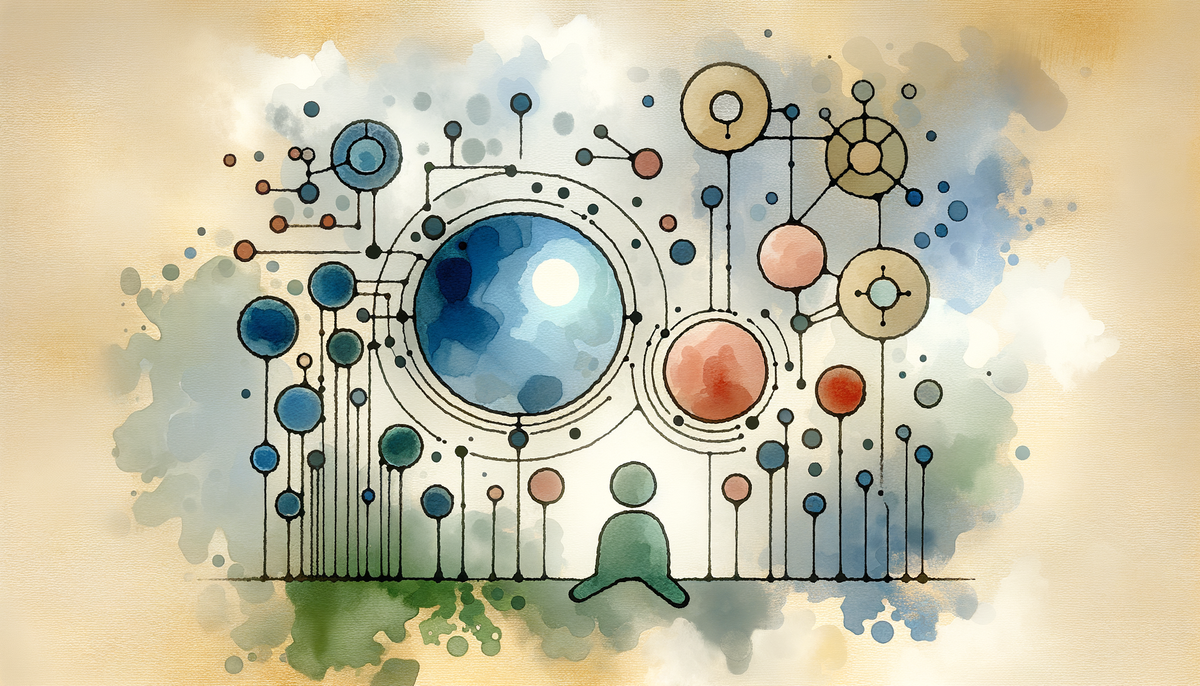AI Updates: Travel Innovations, Awards, and Workforce Transformation

This article delves into how artificial intelligence is reshaping diverse sectors—from transforming traditional business operations and revolutionizing travel planning, to redefining creative expression and workforce structures—by highlighting exemplary innovations such as award-winning platforms from WNS, agentic AI initiatives by IBM, groundbreaking multimodal systems by Alibaba, and creative breakthroughs in AI-driven art generation, all while exploring the ethical and societal implications of these rapid technological advancements.
Transformational Business Innovations: Award-Winning AI at Work
The explosion of artificial intelligence in commercial contexts is more than a fleeting trend; it is a revolution that engineers a new paradigm for innovation and efficiency. A remarkable demonstration of this revolution is seen in the recent success of WNS (Holdings) Limited, which won five coveted awards at the 2025 Artificial Intelligence Excellence Awards (Yahoo Finance). This recognition, granted by the Business Intelligence Group, not only spotlights WNS’s commitment to AI but also exemplifies how technology-driven solutions are fundamentally transforming businesses across industries.
One standout initiative from WNS is their Corporate Travel Management platform built with Generative AI. This industry-first modular solution optimizes operational efficiency and enriches customer interactions by intelligently tailoring travel itineraries and managing bookings. When I consider the traditional logistics behind corporate travel, it is clear that such a technological leap is more than convenient—it is revolutionary. Imagine the time and resources saved by automating complex scheduling and travel planning, thereby allowing teams to focus on strategic priorities.
Complementary to this is the SKENSE Research Genie, which is designed to support insurance underwriters. By harnessing multi-agent research capabilities, the tool generates comprehensive risk assessment reports that reimagine traditional methods into streamlined, technology-driven operations. This technological leap echoes sentiments famously captured by Stephen Hawking:
"Artificial intelligence is a tool, not a replacement for human intelligence."
Here, AI augments the expertise of professionals, empowering them to make faster, data-driven decisions.
Another noteworthy example is KnowRA+, a Gen AI-enabled solution that anticipates customer needs and reinforces the role of predictive analytics in service industries. By preemptively addressing customer queries and reducing delays, KnowRA+ is setting a new standard for customer service, demonstrating that embedding AI in operational processes does not merely automate tasks—it enriches customer experiences.
Systems like WNS Malkom are advancing logistical operations through sophisticated shipping automation technologies that minimize manual processes, while WNS Analytics blends AI’s computational strengths with human insight to serve over 250 global firms. This deep integration of AI in business intelligence speaks volumes about the dedication companies have in harnessing technology to remain competitive and agile.
The Rise of Agentic AI and Its Impact on the Workforce
While the technology driving corporate transformation is undeniably impressive, another wave of innovation is unfolding in the realm of the workforce itself. A recent discussion by IBM executives, as reported by Nation Thailand (Nation Thailand), posits that agentic AI—which is capable of operating autonomously and making decisions independent of human oversight—is poised to fundamentally transform the global employment landscape.
Agentic AI challenges traditional notions of work by acting as both a tool and an independent agent. Unlike conventional AI models which require continual human guidance, agentic AI systems learn, adapt, and execute decisions. The implications are extensive: routine tasks once reliant on human intellect can now be handled by machines, while entirely new roles centered around supervision, strategy, and the ethical management of AI are emerging. It evokes a sense of both challenge and opportunity, as organizations recalibrate their workforce structures to harness these new capabilities.
In sectors such as manufacturing and services, this transition suggests a gradual rebalancing of responsibilities. Rather than eliminating jobs altogether, agentic AI initiates a shift where human workers evolve into experts who manage AI outputs, infuse strategic insight, and provide the emotional intelligence that machines cannot replicate. The need for nuanced human judgment remains paramount even in highly automated environments, underscoring the complementary strengths of human talent and artificial intelligence.
“By far, the greatest danger of Artificial Intelligence is that people conclude too early that they understand it.” – Eliezer Yudkowsky
By blending autonomous AI capabilities with human oversight, companies could not only reach unprecedented levels of efficiency but also address ethical concerns related to automation, such as job displacement and data privacy. The evolution required by these societal shifts is already sparking debates and new research calls for frameworks that promote responsible innovation.
Revolutionizing Travel: From AI Travel Agents to Smart Planning Tools
Travel and tourism are among the industries experiencing a major upheaval thanks to AI-driven innovations. Qatar Airways, for instance, has made headlines with its debut of Sama, an industry-first AI travel agent (TechRadar). This automated assistant is designed to negotiate the intricacies of booking, travel planning, and customer support, offering a seamless digital experience for global travelers.
Meanwhile, Google is pushing the envelope with its comprehensive suite of vacation-planning features across Search, Maps, and the Gemini AI platform (TechCrunch). With its AI Overviews, users can effortlessly generate imaginative travel itineraries based merely on a search query. Whether it’s conceptualizing a nature-filled escape in Costa Rica or curating a bespoke travel plan, Google’s integrated ecosystem makes the dream a tangible reality. These tools also provide practical functionalities such as exporting itineraries to Google Docs and Gmail or pinning destinations on Maps—features that enhance the overall experience and utility for travel enthusiasts.
The technological evolution in the travel space doesn't just stop at planning. Innovative improvements, such as expanded price-tracking features now spanning hotels along with flights, assist travelers in optimizing their budgets. Customizable search options imbued with filters like star ratings and proximity to beaches are redefining vacation planning. Such solutions underscore a paradigm shift where AI not only simplifies the user journey but also enriches the decision-making process, ensuring that personal preferences and budget constraints are harmoniously balanced.
Multimodal AI: Bridging Diverse Data Forms for an Integrated Future
No discussion on contemporary AI would be complete without acknowledging the strides made in multimodal technology. Alibaba’s unveiling of its multimodal AI model Qwen2.5-Omni-7B (Yahoo Finance UK) is a landmark event in the technology sphere. With the capability to process text, images, audio, and video seamlessly, this model harnesses over 7 billion parameters to deliver real-time outputs across various formats.
This versatility isn’t merely about juggling data types—it's about enabling an ecosystem of applications that transform our interaction with devices and services. For example, envision an AI system that can interpret visual data from a user’s environment and provide timely instructions, or one that can synthesize user input in audio and text forms to create a unified narrative response. The open-source aspect of Qwen2.5-Omni-7B, accessible through platforms like Hugging Face and GitHub, accelerates innovation while encouraging collaboration in the technological community.
In a bid to democratize AI, Alibaba is focusing on making these intelligent systems deployable on edge devices like smartphones and laptops, thereby extending their reach to everyday consumer gadgets. This approach is not only cost-effective but also pivotal for bridging the digital divide, essentially fostering greater access to powerful AI tools. Furthermore, with significant investments slated—$53 billion earmarked for AI infrastructure and cloud computing—the company sets a bold precedent for the integration of AI into both enterprise and consumer spheres.
The Fusion of Art and Technology: AI Meets Studio Ghibli
As if transforming business and travel industries weren’t enough, AI is also reimagining creativity and art, catapulting cultural icons like Studio Ghibli into the digital era. With the growing popularity of AI-driven art generation tools, enthusiasts are now empowered to create portraits inspired by the magical worlds of Ghibli (The Economic Times). Leveraging tools such as OpenAI’s GPT-4o, users are able to transform ordinary images into enchanting works reminiscent of Hayao Miyazaki’s masterpieces.
This trend is not only changing how fans interact with their favorite art; it celebrates a symbiosis between advanced algorithms and timeless aesthetics. While ChatGPT Plus offers a premium gateway to these generative capabilities, a number of alternative services—like Midjourney, Getimg.ai, insMind, DeepAI, and Playground AI—provide equally compelling platforms for creating animated portraits. These tools democratize art, enabling anyone with a passion for creativity to explore and reinterpret classic animation styles.
Curiously, while the advances in AI art generation continue unabated, there are voices in the animation community that are more reserved in their acceptance. Renowned animator Hayao Miyazaki, whose work continues to inspire creativity across the globe, has voiced reservations regarding certain aspects of AI-generated art. Yet, the momentum for digitally reimagined, Ghibli-inspired art remains undeterred, as social media platforms brim with user-generated reinterpretations that capture the magical essence of these iconic animations.
"Art, like life, constantly evolves. What was once considered impossible is now within our grasp, thanks to technology and the creative spirit." – Anonymous Art Enthusiast
This fusion of technology and art symbolizes a broader trend in which AI tools are not simply about efficiency or automation—they are catalysts for renewed creative expression and cultural evolution. By empowering individuals to become virtual artists, AI opens up endless opportunities for self-expression and innovation beyond conventional artistic techniques.
Image Generation and the Democratization of Artistic Expression
One of the most fascinating applications of AI has been in the domain of image generation. OpenAI's attempt to integrate an image creation feature into ChatGPT, although facing delays for free-tier users, is a testament to the rising demand for creative AI tools (Engadget). The feature, which has already sparked an online phenomenon with users transforming their photographs into Studio Ghibli-style illustrations, highlights both the explosive popularity and the untapped potential of text-to-image AI models.
CEO Sam Altman’s decision to delay the rollout for free users—while ensuring that paying subscribers gain early access—reflects a balancing act between managing technological load and meeting user expectations in the rapidly evolving field of AI. This staggered approach not only safeguards system integrity but also nurtures a premium community of users who are eager to experiment with bleeding-edge features.
Furthermore, the social media buzz surrounding these AI-powered artistic tools illustrates how technology can drive cultural trends. Images transformed by AI are shared widely across digital platforms, sparking conversations about the intersection of technology and personal expression. This digital renaissance in art, propelled in part by AI innovations, suggests that the future of creative endeavors will likely be defined by a synthesis of human imagination and algorithmic precision.
Convergence and Future Implications
As we survey the landscape of artificial intelligence, it becomes apparent that a convergence of diverse technologies is setting the stage for a more integrated and dynamic future. Whether it’s through enhancing efficiency in corporate operations with award-winning platforms like those from WNS or reshaping the workforce with autonomous agentic AI, the trajectory of AI development emphasizes adaptability and transformation.
Travel, a field once dominated by manual searches and scattered tools, is now harnessing comprehensive AI ecosystems to deliver rich, personalized experiences to users. Google’s investment in travel-centric features perfectly encapsulates this revolution, where every query becomes a potential doorway to a well-curated travel itinerary.
Similarly, the creative domain is witnessing a renaissance spurred by AI, as evidenced by the explosion of Ghibli-inspired art. The synthesis of advanced image generators with widely accessible platforms is redefining creative norms and democratizing artistic expression for generations to come. And while some caution is warranted—a sentiment captured poignantly by Eliezer Yudkowsky—the benefits of these transformative technologies, when harnessed responsibly, offer a promising vista for innovation.
Importantly, the integration of multimodal AI systems, such as Alibaba’s Qwen2.5-Omni-7B, demonstrates the potential of blending various data types into a cohesive and powerful tool. Enabling devices to process text, visuals, audio, and video concurrently not only elevates functionality but also pushes the envelope on how we interact with technology on a daily basis.
In embracing these advancements, businesses, creative professionals, and everyday consumers stand to benefit from safer, smarter, and more efficient solutions that respect both human intuition and the precision of machine computation. The narrative steering AI’s evolution is one of collaboration rather than replacement—an idea succinctly captured when AI tools complement human expertise to unlock previously unattainable efficiencies.
Ethical Considerations and the Road Ahead
Amid these transformative changes, there remain critical ethical considerations that must guide the future of AI. As companies like IBM and Alibaba invest heavily in new AI models and infrastructures, discussions surrounding data privacy, bias mitigation, and the responsible development of AI are increasingly coming to the fore. AI, as a powerful tool, necessitates a balanced approach where technological advancements are matched with robust ethical guidelines.
Industry experts have noted that as AI begins to operate more autonomously—as seen with the rise of agentic AI—it is imperative to institute frameworks that ensure accountability and fairness. The sophisticated yet cautious approach observed in features such as Google’s travel planning and OpenAI’s image generator rollout underscores a commitment to responsible innovation. The key will lie in striking a dynamic balance between leveraging AI’s potential and mitigating its risks—a balance that is as much about corporate strategy as it is about societal values.
Moreover, as research in AI continues at an unprecedented pace, there will be an increasing need for interdisciplinary collaboration between technologists, ethicists, sociologists, and policymakers. This collaboration is essential to forge an environment where innovations are embraced, yet their implications are carefully scrutinized. As historical precedents have shown, technology that reshapes society—be it during the Industrial Revolution or the Digital Age—requires equal parts innovation and wisdom.
Looking ahead, the interplay of different AI technologies, from autonomous agents in the workforce to creative generators in art and travel, presents a world replete with opportunities and challenges. The journey of AI is one of continuous learning and adaptation, with every breakthrough serving as both a culmination of past efforts and a stepping stone to future innovations.
Further Readings and Concluding Thoughts
For those interested in delving deeper into these subjects, recent coverage on these topics can be found on platforms like Yahoo Finance for business excellence, TechCrunch for travel innovation, Nation Thailand for workforce transformations, and Yahoo Finance UK for insights on the latest in multimodal AI.
It’s both fascinating and invigorating to witness such a diverse array of applications for artificial intelligence. From powering business analytics to generating personalized travel experiences and enabling creative revolutions, AI is clearly not just about automating processes—it’s about reimagining how we interact with the world. As we continue on this journey, let us remember that technology is an extension of human ingenuity, unlocking pathways to a future where innovation and creativity continue to flourish.
In the spirit of embracing change and celebrating ingenuity, one can only be excited by what lies ahead in the evolving narrative of artificial intelligence. Whether you are a business leader eager to streamline operations, a travel enthusiast planning your next adventure, or a creative soul ready to reinterpret classic art forms, the AI revolution offers something truly inspiring for everyone.



Comments ()